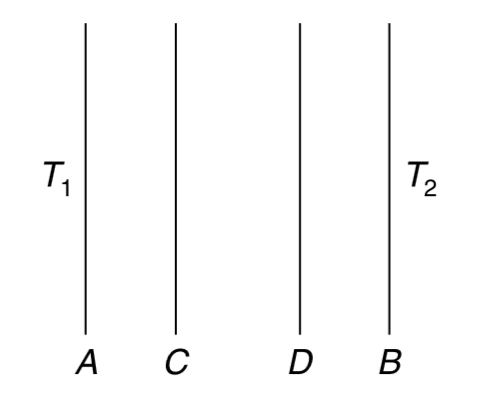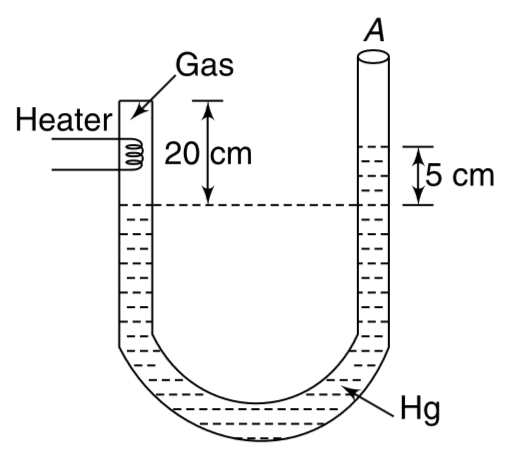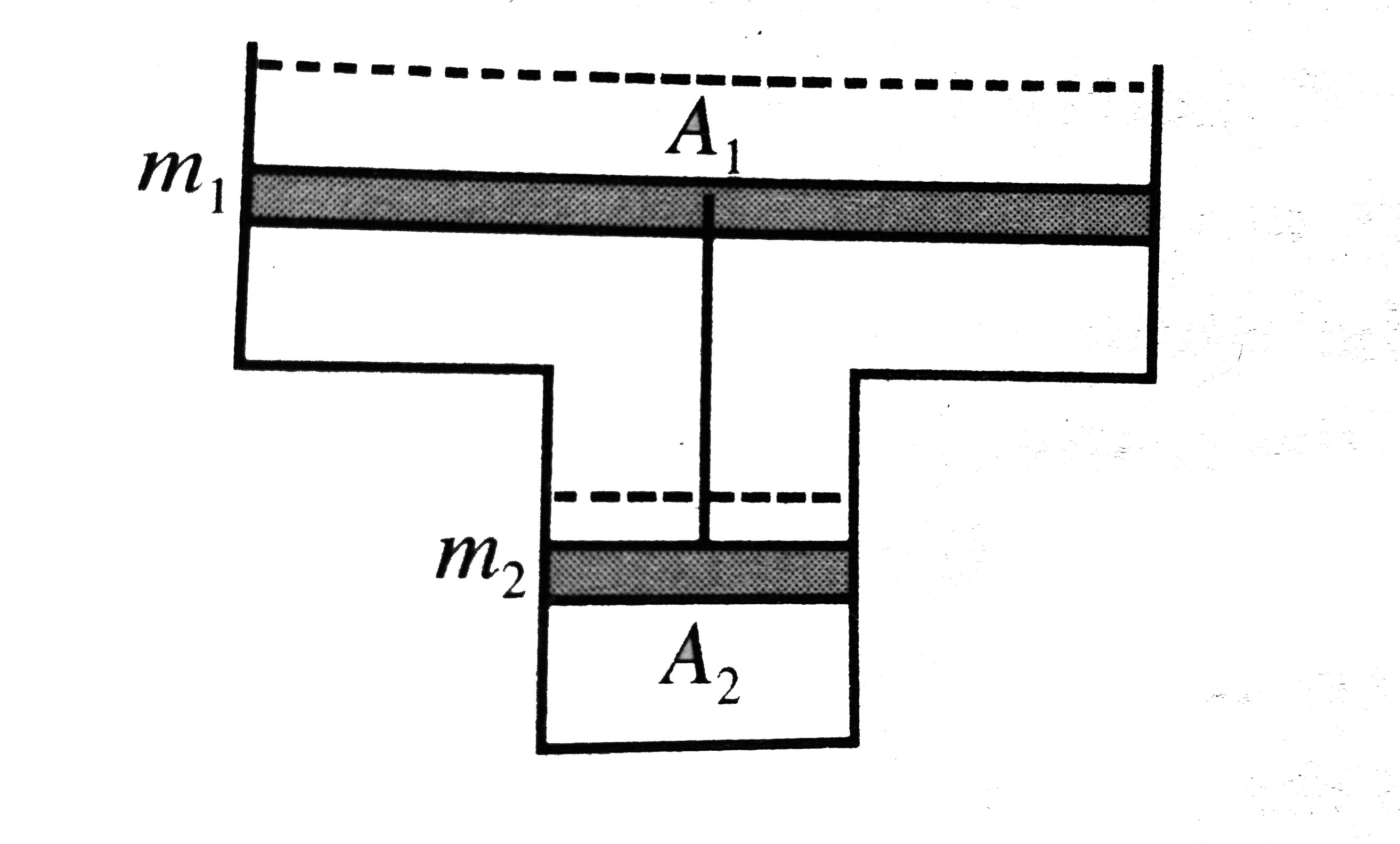The rates of heat radiation from two patches of skin each of area A on a patient's chest differ by If the patch of the lower temp is at and emissivity of both the patches is assumed to be unity, the temp of other patch would be .
The correct Answer is:D
temp of other patch .
Topper's Solved these Questions
- TRANSMISSION OF HEATBOOK - NARAYNACHAPTER - TRANSMISSION OF HEATEXERCISE - LEVEL-III (C.W)
1 Videos
- TRANSMISSION OF HEATBOOK - NARAYNACHAPTER - TRANSMISSION OF HEATEXERCISE - LEVEL- (C.W)
25 Videos
- TRANSMISSION OF HEATBOOK - NARAYNACHAPTER - TRANSMISSION OF HEATEXERCISE - LEVEL - 2 (C.W)
1 Videos
- THERMODYNAMICSBOOK - NARAYNACHAPTER - THERMODYNAMICSEXERCISE - Exercise
187 Videos
- UNITS AND MEASUREMENTSBOOK - NARAYNACHAPTER - UNITS AND MEASUREMENTSEXERCISE - STATEMENT TYPE QUESTION
23 Videos
Similar Questions
A plane surface A is at a constant temperature T1=1000K. Another surface B parallel to A, is at a constant lower temperature T2=300K. There is no medium in the space between two surfaces. The rate of energy transfer from A to B is equal to r1(Js). In order to reduce rate of heat flow due to radiation, a heat shield consisting of two thin plates C and D, thermally insulated from each other, is placed between A and B in parallel. Now the rate of heat transfer (in steady state) reduces to r2. Neglect any effect due to finite size of the surfaces, assume all surfaces to be black bodies and take Stefan’s constant σ=6×10−8Wm−2K−4. Area of all surfaces A=1m2.
(i) Find r1
(ii) Find the ratio r2r1
(iii)Find the ratio rE(2)r1 if temperature of A and B were 2000 K 600 K respectively.

View SolutionConsider a vertical tube open at bothh ends. The cube consists of two parts, each of different cross-sections and each parth having a piston which can move smoothly in respective tubes. The two pistons are joined together by an inextensible wire. The combined mass of the two piston is 5 kg and area of cross-section of the upper piston is 10cm2 greater than that of the lower piston. Amount of gas enclosed by the pistons is one mole. When the gas is heated slowly, pistons move by 50cm. Find rise in the temperature of the gas, in the form 25X/RK where R is universal gas constant. Use g=10m/s2 and outside pressure =105N/m2).
Fill value of X in the answer sheet.

View Solution
Knowledge Check
The rates of heat radiation from two patches of skin each of area A on a patient's chest differ by 2% If the patch of the lower temp is at 300K and emissivity of both the patches is assumed to be unity, the temp of other patch would be .
A306 KB312 KC308.5 KD301.5 KThere is a temperature difference of 1K between two black patches of skin on patient's chest and each patch having area A The radiant heat emitted from them is differ by 2% then temperature of two patches may be .
A100K,101KB300K,301KC200K,201KD400K,401KWhen two bodies at different temperatures are placed in thermal contact with each other, heat flows from the body at higher temperature to the body at lower temperature until they both acquire the same temperature. Assuming that there is no loss of heat to the surroundings,
Athe heat gained by the hotter body will be equal to the heat lost by the colder bodyBthe heat gained by the hotter body will be less than the heat lost by the colder bodyCthe heat gained by the hotter body will be greater than the heat lost by the colder bodyDthe heat lost by the hotter body will be equal to the heat gained by the colder body.
The figure indicates three small patches 1, 2, and 3 that lie on the surfaces of two imaginary spheres, the spheres are centered on an isotropic point source S of sound. The rates at which energy is transmitted through the three patches by the sound waves are equal. Rank the patches according to (a) the intensity of the sound on them and (b) their area, greatest first.

View SolutionOne end of an insulating U tube is sealed using insulating material. A mono atomic gas at temperature 300 K occupies 20 cm length of the tube as shown. The level of mercury on two sides of the tube differ by 5 cm. The other end of the tube is open to atmosphere. Area of cross section of the tube is uniform and is equal to 0.01m2. The gas in the tube is heated by an electric heater so as to raise its temperature to 562.5 K. Assume that no heat is conducted to mercury by the gas.
(a) Find the final length of the gas column.
(b) Find the amount of heat supplied by the heater to the gas.

View SolutionConsider a vertical tube open at both ends. The tube consistss of two parts, each of different cross sections and each part having a piston which can move smoothly in respective tubes. The two piston which can move smoothly in respective tube wire. The piston are joined together by an inextensible wire. The combined mass of the two piston is 5kgand area of cross section of the upper piston is 10cm2 greater than that of the lower piston. Amount of gas enclosed by the pistons is 1mol. When the gas is heated slowly, pistons move by 50cm. Find the rise in the temperature of the gas in the form X/RK, where R is universal gas constant. Use g=10m/s2 and outside pressure =105N/m2).

View SolutionA thermocol vessel contains 0.5kg of distilled water at 30∘C. A metal coil of area 5×10−3m2, number of turns 100, mass 0.06kg and resistance 1.6Ω is lying horizontally at the bottom of the vessel. A uniform time-varying magnetic field is set up to pass vertically through the coil at time t=0. The field is first increased from zero to 0.8T at a constant rate between 0 and 0.2s and then decreased to zero at the same rate between 0.2and0.4s. the cycle is repeated 12000 times. Make sketches of the current through the coil and the power dissipated in the coil as function of time for the first two cycles. Clearly indicate the magnitude of the quantities on the axes. Assumes that no heat is lost to the vessel or the surroundings. Determine the final tempreture of water under thermal equilibrium. Specific heat of metal =500jkg−1K−1 and the specific heat of water =4200jkg−1K−1. Neglect the inductance of coil.
View SolutionStudy the following information carefully and answer the given questions based on it The English alphabet is categorised into five groups, each starting with a vowel and encompassing the immediately following consonants in the group. Thus group one consists of A, B, C and D, group two consists of E, F,G and H, group three consists of 1, J, K, L, M and N, group four consists of O, P, Q,R, S and T, and the remaining letters make group five. These groups are assigned values as 10 for each letter of first group, 20 for each letter of second group, 30 for each letter of third group, 40 for each letter of fourth group, and 50 for each letter of group five. When used to form words, the value of each letter should be added up to compute the value of the word. If the word has letters only from the same group the value of the word would be the value of the sum of letters. However, if the letters in a word are from difierent groups, the value of the first letter of the word and any other letter of that group will be the same as that of its individual letter value of its group, but that of a letter from another group will be 'double’ as much as the value of each letter of its group. If we have to find the value of MANGO, its first letter is M (from third group), among A, N, G and O, N is also from third group. Hence value of M + N = 30 + 30 = 60 Now A, G and O belong to first, second and the fourth group respectively. Hence value of A + G + O = double the value of A + double the value of G + double the value of O = 2*10 + 2*20 + 2* 40 = 140. Hence, total value = 140+600 = 200.
CONCEPT
1)70
2)150
3)360
4)300
5)None of these
View Solution
